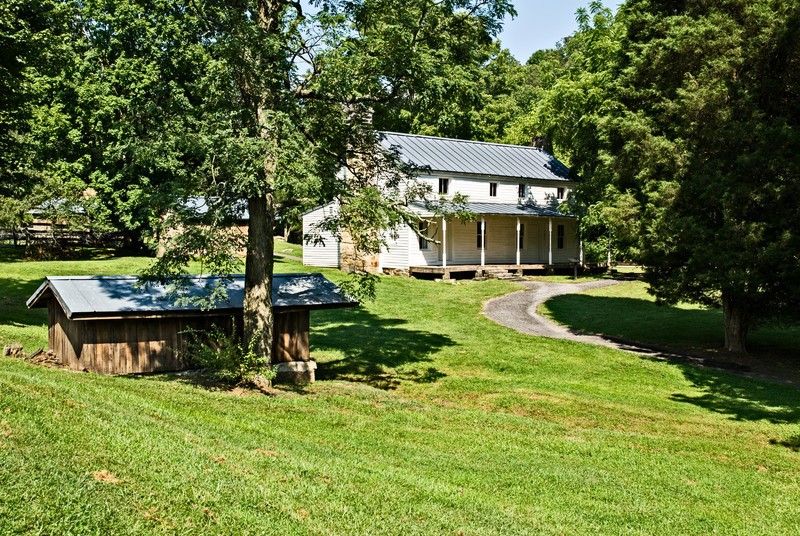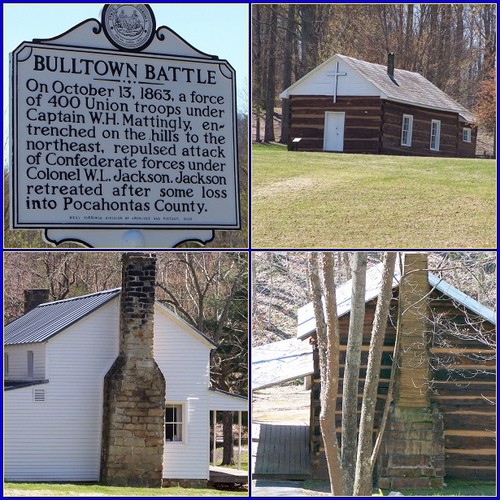Battle of Bulltown
Introduction
Text-to-speech Audio
Images
The farm of as it looks today

Marker and historical buildings on site.

Backstory and Context
Text-to-speech Audio
The Battle of Bulltown was fought on October 13, 1863 at the farm of Moses Cunningham. Although the battle was strategically significant, there were only a handful of casualties. This becomes more striking when considering the duration of the conflict. The exact number varies with the source, but somewhere around 7-8 Confederate soldiers were killed with a few more being injured during the 12 hour engagement.
The Confederate offensive was led by Colonel William Lowther Jackson. Federal troops often referred to him as “Mudwall” Jackson to distinguish him from his cousin “Stonewall” Jackson. Colonel Jackson split his party of nearly 800 men into two groups that were to converge on the fort at daybreak, however, something went wrong with the plan. The first group to reach their position was led by Major J.M. Kessler. The Major decided not to wait for Jackson’s group to arrive and began his advance at 4:30 a.m., but was forced to fall back to their own fortifications by Federal troops.
When Jackson arrived, he set up headquarters on an elevated position on the opposite side of the river. At 8:00 a.m. Jackson sent a note to the Federal troops saying “my forces have now entirely surrounded you, is very largely superior to yours and it is useless for you to contend” to which they instructed Jackson “to come and take us.”
The engagement continued throughout the day with neither side gaining any advantage. At 3:00 p.m. a flag of truce was raised and another message was sent from the Confederates demanding the Federal troops to surrender. Once again the demand was refused and the battle resumed. The conflict lasted until 4:30 p.m when Jackson ordered a retreat. That evening just around dark a detachment of the Fourth Virginia Calvary came riding down to the turnpike to reinforce the garrison, but they were too late to engage the Confederates. With the retreat of the Confederates, this strange and obscure conflict ended with a Union victory.
Though a small conflict, the Battle of Bulltown was very important for the Military History of West Virginia. Had the Confederates succeeded in cutting the lines of communication, the progression of the war in West Virginia would have been dramatically different.
Cite This Entry
Aaron Roberts and Kristi Booton. "Battle of Bulltown." Clio: Your Guide to History. November 3, 2015. Accessed April 10, 2025. https://theclio.com/tour/326/6

